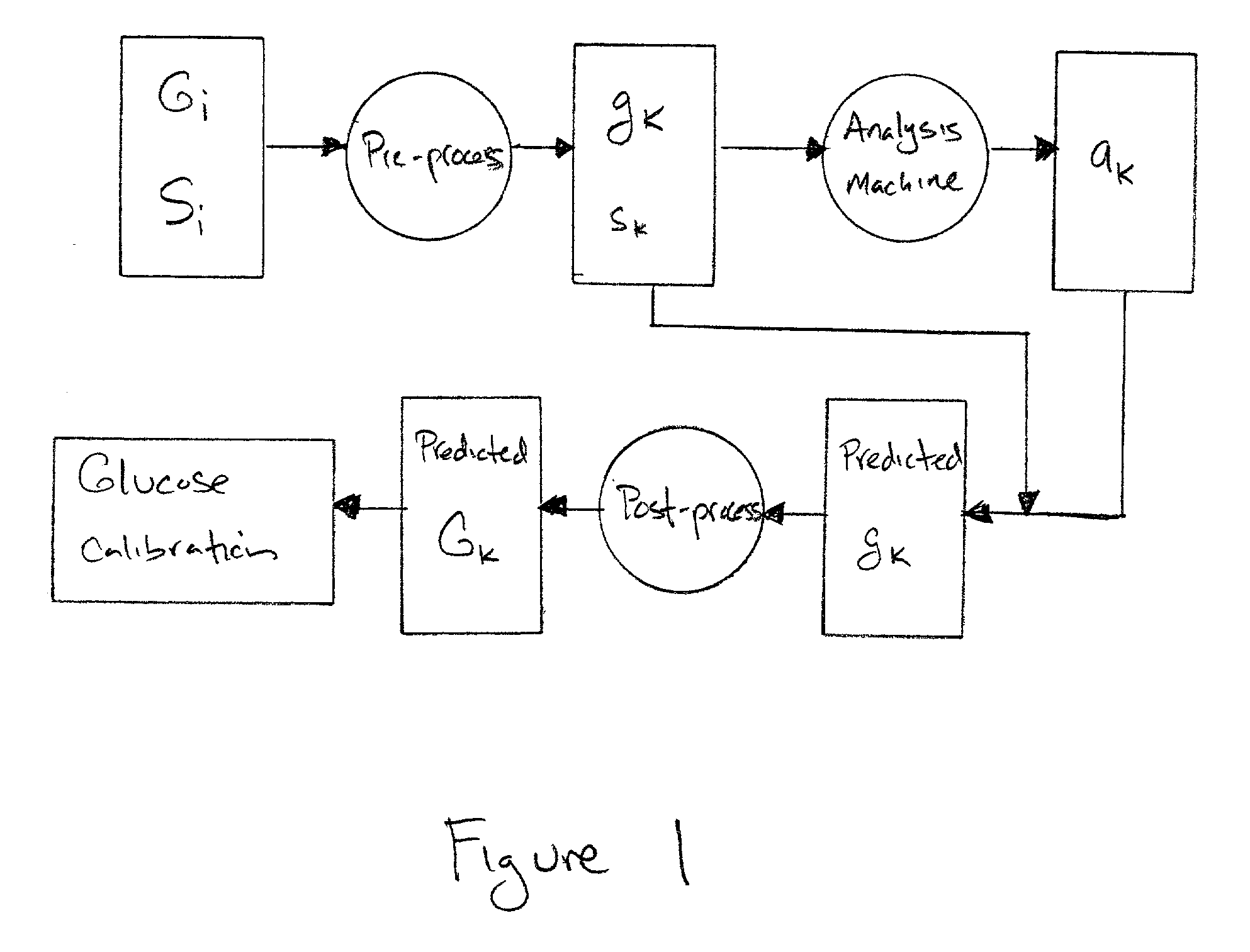Pre- and post-processing of spectral data for calibration using mutivariate analysis techniques
a mutivariate analysis and calibration technology, applied in the field of processing of invivo tissue native autofluorescence spectra, can solve the problems of insufficient quantification of blood glucose levels, marginal success, linear regression,
- Summary
- Abstract
- Description
- Claims
- Application Information
AI Technical Summary
Problems solved by technology
Method used
Image
Examples
Embodiment Construction
[0019] Creating a marketable product for the non-invasive monitoring of glucose using fluorescence excitation spectroscopy requires the analysis of large numbers of spectra from a large population of individuals, and the creation of algorithms which convert spectral data from this population into glucose values. A single algorithm may work for everybody, or the large populations may well separate into a relatively small number of subgroups or "clusters," each of which has a distinct variant algorithm.
[0020] As used herein, the process of creating one or more algorithms for the conversion of tissue fluorescence data for a person or group into blood glucose values for that same person or group will be referred to as the "fluorescence-glucose calibration problem," or when no confusion could exist, more simply as "glucose calibration."
[0021] In the case of in-vivo tissue auto-fluorescence spectra, it has been established that a correlation between the spectra and glucose exists. This ca...
PUM
| Property | Measurement | Unit |
|---|---|---|
| excitation wavelength | aaaaa | aaaaa |
| excitation wavelengths | aaaaa | aaaaa |
| wavelengths | aaaaa | aaaaa |
Abstract
Description
Claims
Application Information
 Login to View More
Login to View More - R&D
- Intellectual Property
- Life Sciences
- Materials
- Tech Scout
- Unparalleled Data Quality
- Higher Quality Content
- 60% Fewer Hallucinations
Browse by: Latest US Patents, China's latest patents, Technical Efficacy Thesaurus, Application Domain, Technology Topic, Popular Technical Reports.
© 2025 PatSnap. All rights reserved.Legal|Privacy policy|Modern Slavery Act Transparency Statement|Sitemap|About US| Contact US: help@patsnap.com


